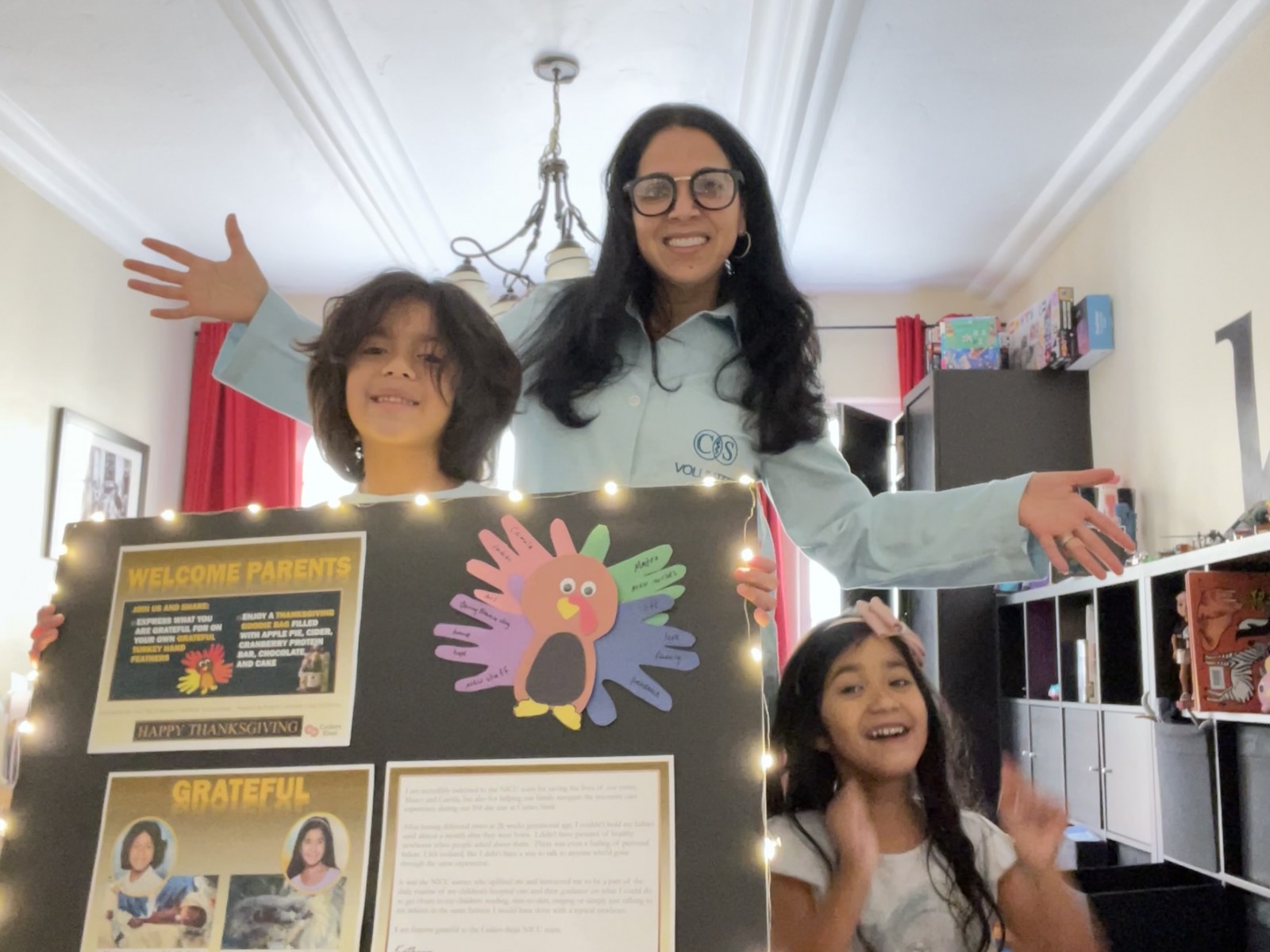The twins were in the Cedars-Sinai Neonatal Intensive Care Unit (NICU) for three months, and Garcia Castro spent every day with them.
The twins—Mateo and Camilla, now 7 years old and in the second grade—are busy with school and friends. And Garcia Castro? She is still at Cedars-Sinai.
That’s because Garcia Castro volunteers as a patient and family advisor, offering support and advice for new parents in the NICU. One of her favorite activities is teaching and encouraging new parents to hold their premature babies skin-to-skin, something nurses helped with when she was a new mom. She also was able to help create a welcome packet for new parents.
“The nurses were so helpful to me when I was overwhelmed in the NICU; this is my way of giving back,” Garcia Castro said.
Garcia Castro belongs to one of Cedars-Sinai’s Patient & Family Advisory Councils, part of the larger Patient & Family Advisor Program—a group of about 50 former patients who advise Cedars-Sinai about improving patient experience based on their own time as a patient or caregiver.
“For a hospital caregiver, it is very important to hear the perspective of patients and their families,” said Alan Dubovsky, vice president and chief patient experience officer. “They bring the patient’s voice to the table. The goal of patient and family advisors is to share that perspective and make sure it is considered as we work toward elevating the patient experience.”
Although some councils were started earlier, the formal Patient & Family Advisor Program was founded in 2019. Members are asked to offer suggested improvements for the medical center and other patient care areas. They have worked on tasks ranging from discharge checklists and wayfinding projects to care packages and meal suggestions. Now, the council is looking to attract new volunteers to grow its ranks.
Brandy Starks joined the Patient & Family Advisor Program in 2019 after serving both as a former employee and patient. As an employee, she worked in advanced heart disease research. As a patient, she was treated for a pulmonary embolism, a cardiac arrhythmia and other issues. When she returned to good health, she was already employed elsewhere but wanted to give back to Cedars-Sinai.
“The care was so supportive at Cedars-Sinai, I was inspired to help others,” she said.
As a patient and family advisor, Starks worked on both inpatient and outpatient projects, including one initiative to standardize information on the whiteboard in patient rooms and another effort to make patient research consent forms easier to understand. Today, Starks attends monthly meetings and offers suggestions as a former patient.
“My experience on the council inspired me to start a nonprofit organization to help underserved community members learn how they can benefit from clinical trials,” Starks said.
Most patient advisors say they commit to working on council projects or attending meetings about twice a month for an hour or two. For LaShone Mays, it’s an important commitment to fit between her work as a Cedars-Sinai respiratory therapist and her home life as the mother of a child with sickle cell disease.
“As the parent of a child who is hospitalized frequently, and as a hospital employee, I have a unique perspective that I offer,” Mays said. “If you have a special-needs child, and have ideas how their care can be improved, becoming a patient and family advisor is a way to have input and have your ideas considered.”
She knows what it’s like to rush to the hospital without any necessities, and from that experience came the idea of gift bags that include necessary toiletries for parents of hospitalized children.
“Such a simple solution makes such a big difference to our patients and their parents,” Dubovsky said.
To learn more about becoming a patient family advisor, please visit the Cedars-Sinai website.
Read more on the Cedars-Sinai Blog: Faces of Cedars-Sinai—Alan Dubovsky, Chief Patient Experience Officer




